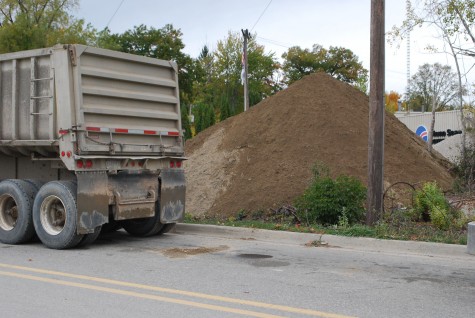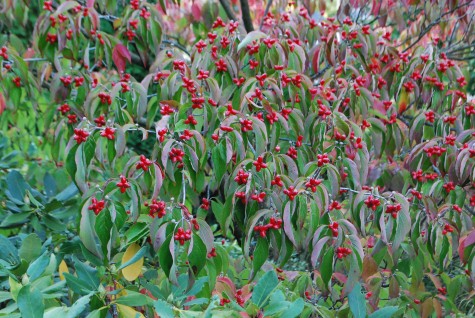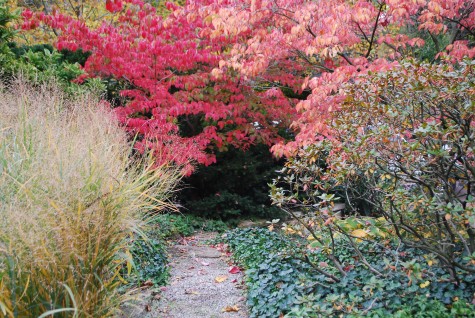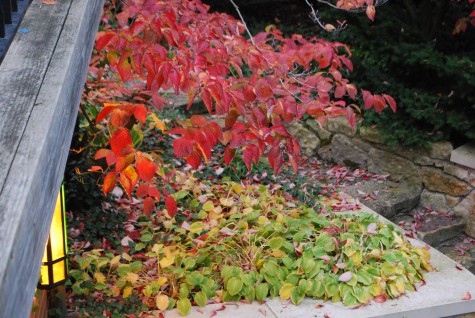By late October, many garden plants have that foundering, fish out of water look. You know what I mean. My butterburrs are moments from total collapse. The hostas have that translucent sickly yellow color which precedes the frost turning them to mush. But some things look great yet-my Carefree Beauty roses look strikingly fresh. The foliage is lush and healthy. The pink flowers have an intense cerise pink cast from the cold nights. Though a hard frost will finish them off, they are beautiful right now. It is a rare year that we do not have a hard frost before Halloween. Our coldest night yet has been 40, but I doubt this will hold much longer. I appreciate so much what the garden has to offer right now; the dormant season is closer than any northern gardener is willing to admit.
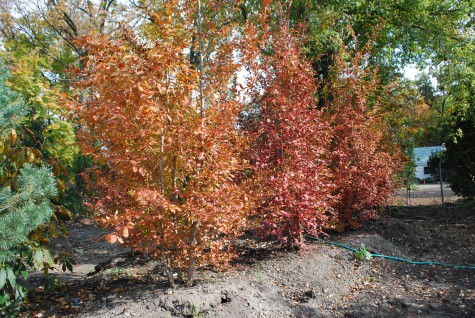 I was fortunate enough to get a tour of Landscape Supply Inc recently from owner Steve Alford. He has made a life’s work of making rare, unusual and specimen plant material available to the trade. I could not tell that this tree was a Stewartia-the tall thin shape is so unusual for this tree. But what I admired the most was that pink-orange fall color-sensational. I understand why many gardeners in my area are so keen for the fall season. At no other time of year is there so much color in the landscape. As few trees are purchased in fall color, it’s worthwhile to consider that fall color when choosing or placing a tree. Landscape design requires lots of thought times 4-the four seasons.
I was fortunate enough to get a tour of Landscape Supply Inc recently from owner Steve Alford. He has made a life’s work of making rare, unusual and specimen plant material available to the trade. I could not tell that this tree was a Stewartia-the tall thin shape is so unusual for this tree. But what I admired the most was that pink-orange fall color-sensational. I understand why many gardeners in my area are so keen for the fall season. At no other time of year is there so much color in the landscape. As few trees are purchased in fall color, it’s worthwhile to consider that fall color when choosing or placing a tree. Landscape design requires lots of thought times 4-the four seasons.
 Petunias shake off the cold and keep right on blooming. This plant has been awash in color since the first of June-5 months. I water much less now, and have really quit looking after them. You would never know this, to look at them. It is an entirely different look from the summer, to see them in the foreground of the kousa dogwood in fall color. If your annuals seem to peter out by labor day, you might want to look into seeing what you could do differently to keep them producing throughout the fall.
Petunias shake off the cold and keep right on blooming. This plant has been awash in color since the first of June-5 months. I water much less now, and have really quit looking after them. You would never know this, to look at them. It is an entirely different look from the summer, to see them in the foreground of the kousa dogwood in fall color. If your annuals seem to peter out by labor day, you might want to look into seeing what you could do differently to keep them producing throughout the fall.
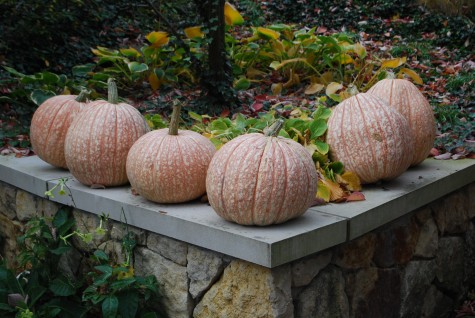 I do love Halloween; Buck and I must have hundreds of kids and families who come by that night. This variety, curiously named “One Too Many”, I will carve, and set in my pots Halloween night. The white pumpkins have orange netting that has a decidedly pink cast. I may set each one up on a circle of all white pumpkins. Or maybe the traditional orange; making decisions like this is the fun part of gardening.
I do love Halloween; Buck and I must have hundreds of kids and families who come by that night. This variety, curiously named “One Too Many”, I will carve, and set in my pots Halloween night. The white pumpkins have orange netting that has a decidedly pink cast. I may set each one up on a circle of all white pumpkins. Or maybe the traditional orange; making decisions like this is the fun part of gardening.
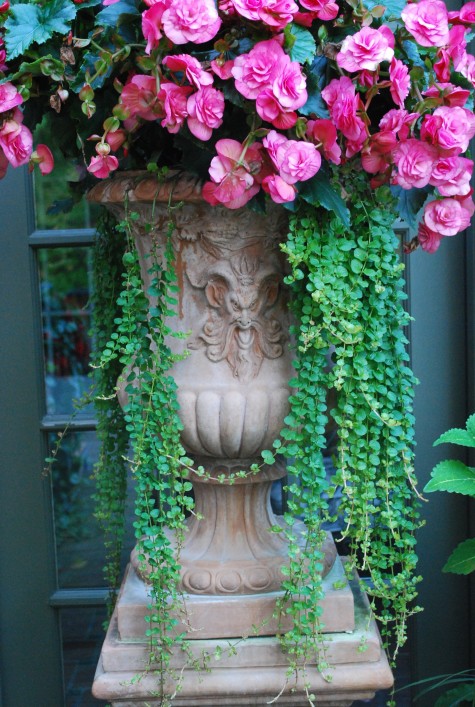 My Solenia rose begonias are in a very protected spot on my deck-they have been spared with blustery winds and driving rain. They are an outstanding strain of large flowered begonias. They have been covered in flowers for months, and only ask that I be careful not to overwater. They are geniunely in the pink right now.
My Solenia rose begonias are in a very protected spot on my deck-they have been spared with blustery winds and driving rain. They are an outstanding strain of large flowered begonias. They have been covered in flowers for months, and only ask that I be careful not to overwater. They are geniunely in the pink right now.

Limelight hydrangeas put on a spectacular fall display. In varying shades of cream-white, green, pink, and rose pink, they dry readily in this stage. Kept out of direct light indoors, they keep their color as long as you want to look at them. One bouquet I particularly fancy I have had almost 4 years now.

There are lots of plants that endure or thrive in the fall. The toad lilies are blooming now, as are the anemones and boltonia. My grasses are beautiful. The boston ivy is beginning to color up. My Caliente pink geraniums, so highly recommended by Alan Armitage, look as good today as they did every day of the past 5 months. The trees are turning. The early hours of the day make for skies more likely to be pink than blue. It is an exciting time of year.



